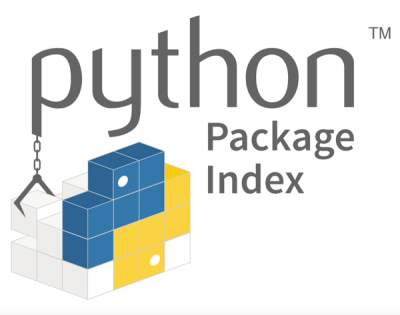Angular-Pharkas
Pharkas, Freddy Pharkas. / Frontier Pharmacist bourgeoisie — The Ballad of Freddy Pharkas (Frontier Pharmacist)
It could stand for Powerful Hooks for Angular ReactiveX Components, Attributes, and States. It could, but it probably doesn’t.
The angular-pharkas library is a wild, frontier pharmacist approach to building Angular components, in that it is all about that RX:
- "Observable only"
- No Subjects leaking out of this API!
- No intentional imperative escape hatches
- Zone-free
- Observables are already, always
push no reason for any "change detection" strategy than "OnPush" - Zone-free means no need for
zone.js: noop that bloated crud
AsyncPipe-free
AsyncPipe is great, but who needs | async everywhere in your templates when that should have been the default? It's especially
unnecessary when "Observable only"
- Managed subscriptions
- No
ngOnit and ngOnDestroy dances, the last ngOnDestroy you'll ever need is the automatic one in the BaseComponent - "Smarter" subscriptions by default
- Template binding change "pushes" are throttled to requestAnimationFrame for smooth as magic views
It is inspired by ReactiveUI (.NET), the Hooks of React, and rx-angular, but it is also none of those.
The Inevitable Angular Compatibility Chart
| Pharkas version | Supported Angular |
|---|
| 7.0.0 | Angular 15 |
| 4.0.0 | Angular 13 |
| <=3.0.0 | Angular 11 |
Start a Component
A basic empty component starts like this:
@Component({
selector: 'app-my-example',
template: 'Example Template',
changeDetection: ChangeDetectionStrategy.OnPush,
})
export class MyExampleComponent extends PharkasComponent<MyExampleComponent> {
constructor(ref: ChangeDetectorRef) {
super(ref)
}
}
The generic argument to PharkasComponent gives you type safe magic when you need to provide property names, and is a sign
of where the redundancies start to get good types and also fit inside Angular's box for how a component needs to look.
Need to pass the ChangeDetectorRef from Angular's DI because where we are going, we need no Zone.
General Flow, Tips and Tricks
The general flow for a Pharkas-based component is (Create)/Use/Bind:
- Create a resource, if necessary
- Use that resource to get an observable of changes to it
- Bind observables to resources that need to observe them
Create isn't always needed, many "use hooks" will create things implicitly.
In general:
- If everything is Observable throwing
$ on everything is tedious
- This probably isn't the right sort of saloon for throwing all those dollar bills around, partner
- If it changes, it should be an observable
- If it needs to update the view somehow, it needs to bind to something
- But also, not all binds update the view
- The more words in a Pharkas function the more of an edge case it is intended to serve, try the "defaults" first
- Observables, observables, observables; stop the escape hatches!
- Avoid using
this as much as possible - Use
readonly for Observables or other template bindings that should not change
Angular Inputs
The Angular Input pattern, for anything and everything that might possibly move or change:
@Component({
})
export class MyExampleComponent extends PharkasComponent<MyExampleComponent> {
@Input() set testInput(value: Observable<string>) {
this.setInput('testInput', value)
}
constructor(ref: ChangeDetectorRef) {
super(ref)
const testInput = this.useInput('testInput', 'Hello World')
}
}
Inputs are set only, no get. To use the input you must use useInput to get an Observable. No imperative escape
hatch here!
Good Inputs themselves are Observable of changes and you should encourage your consumers to also use Observables. Also
good Observables shouldn't be bound more than once and you'll see a warning in the console in Dev Builds if a consumer
does that.
But sometimes you need backward compatibility with older consuming components and setInput has your back also
supporting that if you need it:
export class … {
@Input() set testInput(value: string | Observable<string>) {
this.setValue('testInput', value)
}
}
It will give you console warnings in development builds for non-Observable inputs.
this.useInput accepts as an optional second parameter a default value or a function that returns a default
Observable if an Observable was not bound to the input property prior to ngOnInit.
export class … {
constructor(ref: ChangeDetectorRef, service: SomeService) {
super(ref)
const testInput = this.useInput('testInput', () => service.GetSomeObservable())
}
}
Note that using a service class dependency adds tighter coupling for what may be more useful as an always
provided input, which would be looser coupled.
Also, yeah the string property names and duplication isn't great, but we are working with what Angular gives us.
Template Bindings (View Variables, Display Slots, Whatever You Call Them)
The template binding pattern:
@Component({
})
export class MyExampleComponent extends PharkasComponent<MyExampleComponent> {
get testDisplay() {
return this.bindable<string>('testDisplay')
}
constructor(ref: ChangeDetectorRef) {
super(ref)
this.bind('testDisplay', someObservable, 'Default Value')
}
}
This pattern, like Inputs, needs a bunch of redundant property names, sorry.
Template variables are get only. Set them by binding an Observable to them.
Don't use the getter imperatively in your own code. You bound the observable, observe the
Observable.
"Smart" Bindings By Default
By default many Pharkas bindings are scheduled around requestAnimationFrame. This helps
give smoother feeling performance, and avoids Angular's detectChanges() work and rerendering
templates faster than the browser can possibly render them.
Some things you may need to make sure get to the DOM ASAP, such as user inputs when strongly
managing the DOM. (If you were to build a "push" alternative to Angular's ReactiveForms,
for instance.) In such cases there are "Immediate" variants of bindings. You may not need them,
and the defaults should do what you need in most cases.
Suspense
A component may bind a suspense observable:
@Component({
})
export class MyExampleComponent extends PharkasComponent<MyExampleComponent> {
constructor(ref: ChangeDetectorRef) {
super(ref)
this.bindSuspense(someSuspenseObservable)
}
}
When this Observable<boolean> emits true, template change notifications are skipped for
non-immediate template bindings until the next false is emitted. The pharkasSuspense
blinkenlight reflects this suspense state.
This may be useful for instance while a loading operation is taking place to display some
simple loading indicator and reduce "UI bouncing" with intermediate states.
Note that this only suspends normal change detection pushes. It will not entirely eliminate
such "UI bouncing" as for instance an immediate binding will still trigger Angular change
detection.
Blinkenlights
Pharkas provides a set of blinkenlights (lights intended to blink a status) for very basic error
status indication or suspense states (such as loading).
The error blinkenlights are "last chance error reporting" blinkenlights for generic error
situations when any observable provided to bind or bindEffect or an "Immediate" variant of
such has thrown an error.
It is encouraged to move error detection and avoidance strategies such as retries up into your
observable pipelines themselves, but sometimes you need a last chance way to detect that the
worst has happened, the component may be stopped/stuck, and in that case render some sort of
frowny face 😟.
Callbacks
Callbacks are very useful for everything from consuming output bindings of other Angular controls to
events from non-Angular components to stashing local state in an easy to call to update manner.
The callback pattern:
@Component({
})
export class MyExampleComponent extends PharkasComponent<MyExampleComponent> {
readonly testCallback: (e: MouseEvent, somethingElse: string) => void
constructor(ref: ChangeDetectorRef) {
super(ref)
this.testCallback = this.createCallback('testCallback')
const testCallback = this.useCallback('testCallback')
}
}
Note that callbacks on their own do not update view state. Only binding an observable downstream
somewhere to a template binding/display property will do that.
"Last Resort" Side Effects
When all else fails and you absolutely must subscribe to do a side effect:
this.bindEffect(observable, (value) => {
})
bindEffect is a last resort when you absolutely must subscribe a side effect to something.
It's an escape from the comfy observable management of Pharkas. (Though not a true escape
to imperative code either, Pharkas still manages the subscription on your behalf and any
escape hatches you build on the class with effects are your problem to manage, Pharkas is
still not leaking RxJS Subjects here.)
bindEffect does not call Angular change detection on its own, and you may need to do it
manually, but don't do that, figure out out move that stuff to bindable and observables
you can bind instead.
Angular Outputs
The Angular Output pattern:
@Component({
})
export class MyExampleComponent extends PharkasComponent<MyExampleComponent> {
@Output() readonly testOutput = new EventEmitter<string>()
constructor(ref: ChangeDetectorRef) {
super(ref)
this.bindOutput(this.testOutput, someObservable)
}
}
EventEmitter<T> is the only class Angular supports for outputs. It is an awful class, leaking BehaviorSubject<T> APIs
and is an inescapable imperative escape hatch that shouldn't exist in the core of the framework, much less be the only way
to do this, but here we are.
Don't use the EventEmitter<T> directly, ever. Only use this.bindOutput().
readonly is a useful Typescript type hint to keep us from doing some stupid things with it such as breaking our bindings,
at least.



